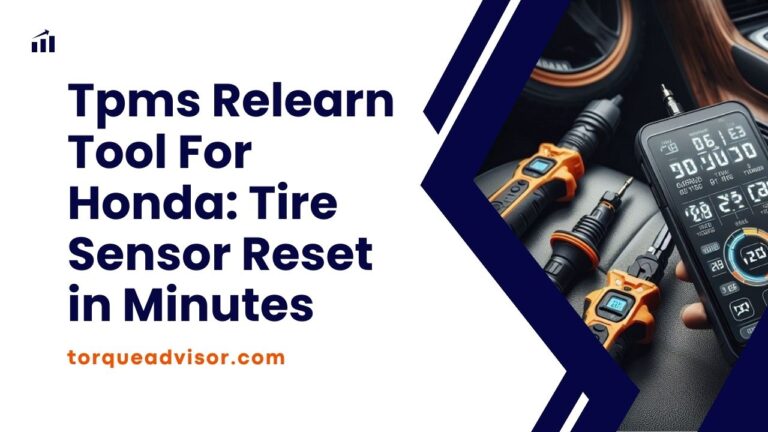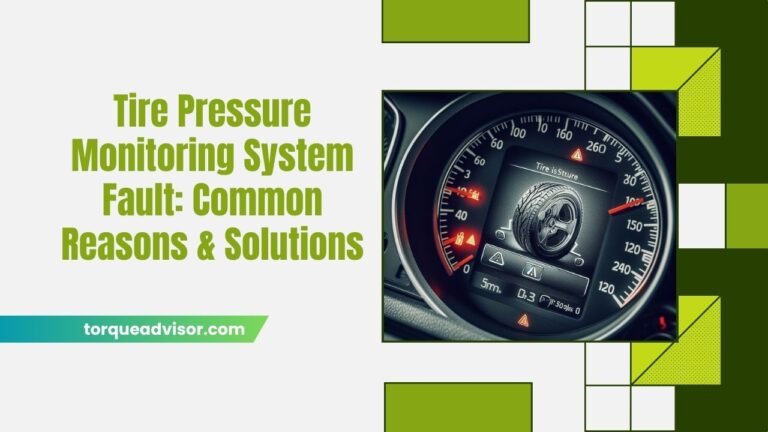Honda Tpms Light On But Tires Are Fine
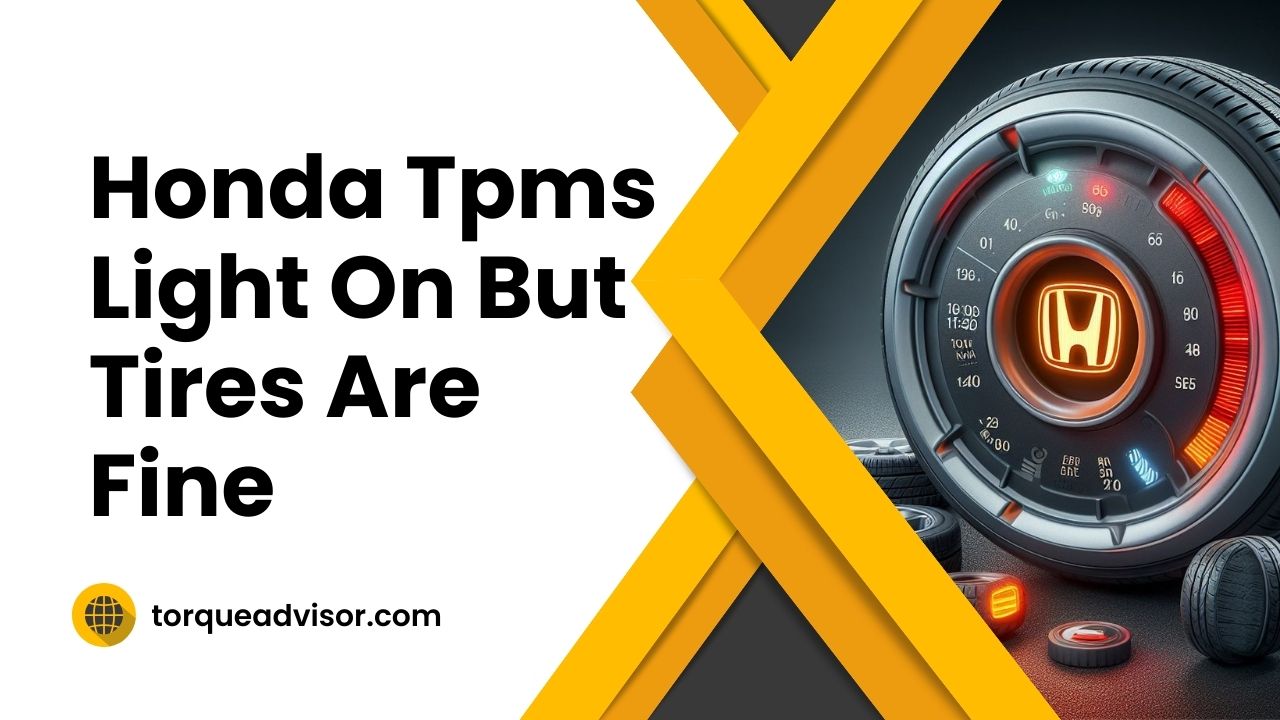
Do you know what is the reason behind honda tpms light on but tires are fine? There are several reasons why your Honda’s TPMS light might be on even though your tires seem fine.
Remember, ignoring the TPMS light can lead to tire underinflation, affecting handling, fuel efficiency, and even tire blowouts.
A lit TPMS light on your Honda with seemingly fine tires can be frustrating! Here are some possibilities and next steps:
1. Sensor malfunction
Sensors have batteries that can die over time (usually after 5-7 years). A dead sensor won’t transmit pressure data, triggering the light.
2. Slow leak
Even a small leak might not be obvious visually but can gradually cause pressure to drop below the system’s threshold, triggering the light.
3. Extreme temperature changes
Tire pressure naturally fluctuates with temperature variations. Cold weather can cause pressure to drop slightly, potentially activating the light.
4. System error
Occasionally, the TPMS system itself might experience a glitch or error, falsely triggering the light.
5. Incorrect reset procedure
If you recently adjusted tire pressure and didn’t follow the proper relearn procedure for your Honda model, the light might stay on.
6. Tire Pressure Check
Double-check all your tires, including the spare, with a reliable gauge. Refer to your Honda manual for the recommended pressure (often on a sticker inside the driver’s door jamb). Even a slight underinflation can trigger the light.
What Does The Honda TPMS Light Mean?
In a Honda, the Tire Pressure Monitoring System (TPMS) light illuminates to warn you of a potential issue with your tire pressure.
It typically looks like a yellow icon depicting a tire with an exclamation mark inside. Depending on your Honda model and year, the message might even explicitly say “Tire Pressures Low.”
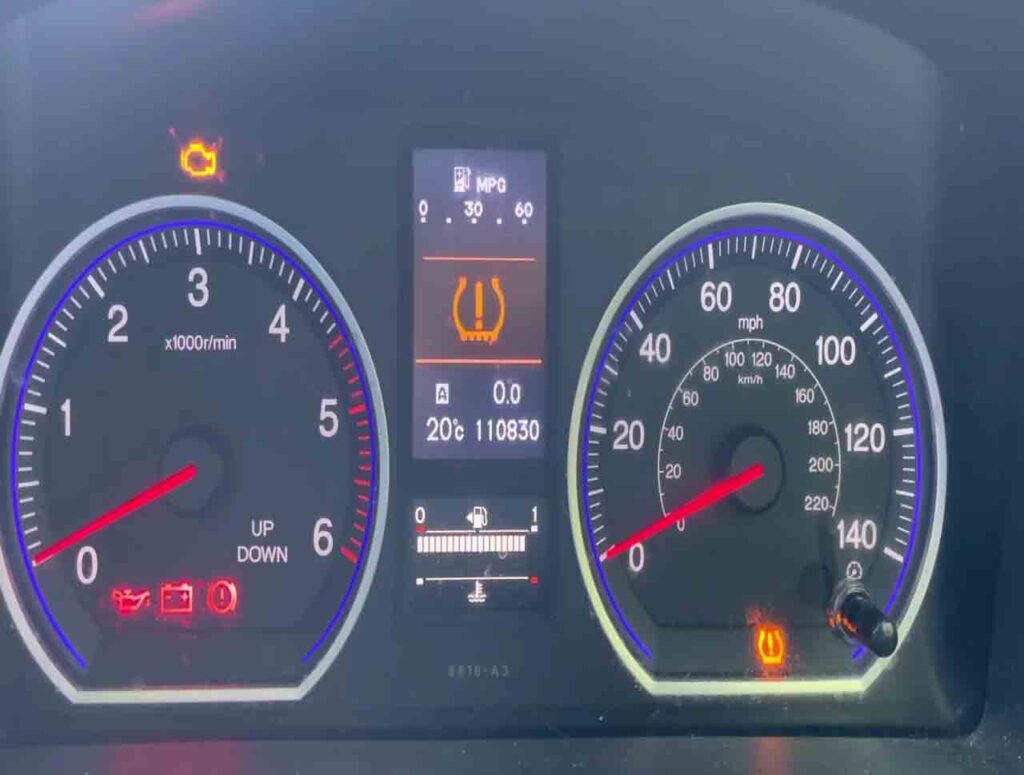
How to Reset the Honda TPMS Light
The proper way to reset the Honda TPMS light depends on the type of TPMS system your Honda uses:
- Ensure all tires are inflated to the recommended pressure.
- Enter the “Vehicle Settings” or “TPMS” menu on your Honda’s instrument cluster.
- Select the “TPMS Reset” or “Tire Pressure Relearn” option.
- Follow the on-screen instructions or prompts from the connected tool.
- The process typically involves turning the ignition on and off in specific sequences while driving or stationary.
- The light should turn off once the system successfully learns the new tire pressures.
Honda Tpms Light Vs Tire Pressure Light
Here’s a simple table to compare the Tire Pressure Light and the TPMS (Tire Pressure Monitoring System) Light:
| Aspect | Tire Pressure Light | TPMS Light |
| Function | Indicates low tire pressure. | Indicates a problem with the TPMS. |
| Activation | Illuminates when one or more tires have low pressure. | Illuminates when there is an issue with the TPMS. |
| Cause of Activation | Low tire pressure. | System malfunction or sensor issues. |
| Action Required | Check tire pressure and adjust as needed. | Investigate the TPMS system, check sensors, and repair as necessary. |
| Light Persistence | Stays on until the tire pressure is corrected. | Stays on until the TPMS issue is resolved. |
| Resetting the Light | Resets after proper tire inflation. | Requires resolving the TPMS system issue and clearing the error code. |
Read More About Tpms Relearn Tool For Honda: Tire Sensor Reset In Minutes
Troubleshooting the Tire Pressure Monitoring System
Here are some steps you can take to troubleshoot TPMS problems:
1. Check Tire Pressure Manually
Check the pressure in each tire against the recommended values in your vehicle’s manual. Adjust any tire pressures that are below the recommended levels.
2. Verify Spare Tire Pressure
Ensure that the spare tire, if your vehicle has one, is also properly inflated.
3. Inspect for Visible Damage
Inspect each tire for visible damage, such as punctures, cuts, or bulges.
4. Reset the TPMS
Some TPMS systems allow you to manually reset them after adjusting tire pressures.
5. Check Sensor Batteries
TPMS sensors have batteries that may need replacement over time. If your vehicle is equipped with direct TPMS (sensors in each wheel), check if the batteries are still operational.
6. Scan for Fault Codes
Use an OBD-II scanner to check for TPMS-related fault codes. This can provide insight into specific issues that the system may be experiencing.
7. Verify Sensor Position
Make sure that the TPMS sensors are installed on the correct wheels. Some systems may display the tire positions on the dashboard, allowing you to identify if sensors are in the wrong locations.
When Does the TPMS Light Come On?
Here are some common scenarios that may trigger the TPMS light:
- Low Tire Pressure: The most common reason for the TPMS light to illuminate is low tire pressure.
- Significant Pressure Difference: A significant difference in pressure between them may also trigger the TPMS light.
- TPMS Sensor Malfunction: If one or more of these sensors malfunction, it can cause the TPMS light to come on.
- System Calibration Issue: Sometimes, the TPMS system may need to be recalibrated after tire rotation, replacement, or other maintenance.
- Faulty TPMS Module: In some cases, the TPMS itself may be faulty, leading to incorrect warnings or a constant TPMS light.
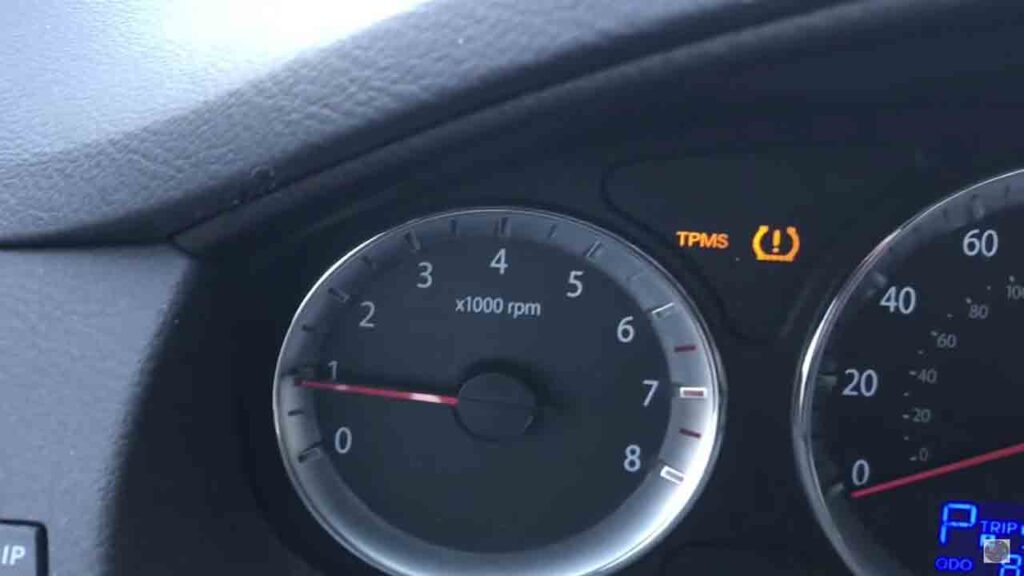
Read Also Unlock Horsepower: Comp Cam Selection Guide For Optimal Performance
What if the TPMS Light Came On For a Few Minutes and Turned Itself Off?
If your TPMS light came on for a few minutes and then turned off on its own, it could be due to several factors:
- Minor Temperature Fluctuation
- Transient System Glitch
- Sensor Fatigue
- Tire Leak
- Improper Tire Inflation
Tpms Light Will Not Go Out After Tpms Sensor Replacement
Here are some steps you can take to troubleshoot the problem:
1. Ensure Proper Installation
Make sure that the new TPMS sensor is installed correctly on the designated wheel. Each sensor is usually specific to a particular wheel location.
2. Verify Sensor Compatibility
Ensure that the replacement TPMS sensor is compatible with your vehicle make and model.
3. Battery Activation
Some TPMS sensors have a battery that needs to be activated. Check the sensor’s manual or instructions to ensure that the battery is properly activated.
4. Relearn Procedure
After replacing a TPMS sensor, many vehicles require a relearn or reset procedure to sync the new sensor with the vehicle’s TPMS system.
5. TPMS Scan Tool
Some vehicles may require the use of a TPMS scan tool to reset the system and recognize the new sensor.
6. Check for Faulty Sensors
It’s possible that the new TPMS sensor is faulty or not transmitting the correct signal. Use a TPMS scan tool to check for any error codes or issues with the sensor.
What If I Filled The Tire, But The Sensor Didn’t Reset?
If you filled the tire but the sensor didn’t reset, there may be an issue with the tire pressure monitoring system (TPMS) sensor. Consult your vehicle’s manual or a mechanic for assistance.
What If I Reset The Tpms Light, But Now It’s Flashing?
If you reset the TPMS (Tire Pressure Monitoring System) light and it’s now flashing, it may indicate a malfunction. Check the tire pressure again, and if the issue persists, visit a professional for diagnostics and repair.
Why Is My Tpms Light On When My Tires Are Full?
The Tire Pressure Monitoring System (TPMS) light may still be on despite full tire inflation due to a malfunctioning sensor, low sensor battery, or system calibration issues.
Why Is My Tpms Light On But My Tires Are Fine?
The TPMS (Tire Pressure Monitoring System) light can illuminate due to various reasons, including sensor malfunctions, low battery in the TPMS sensor, or system calibration issues.
Why Is My Tyre Pressure Light On When My Tyres Are Fine?
The tire pressure light may be triggered by a faulty sensor, electrical issues, or a system malfunction. Even if the tires appear fine, the sensor or the monitoring system itself may be giving a false reading.
Why Is My Tire Pressure Light On When My Tires Are Fine Honda Accord?
The tire pressure light in your Honda Accord may be on due to a faulty tire pressure sensor, a problem with the tire pressure monitoring system (TPMS), or a low battery in one of the sensors.
Honda Tpms Sensor Programming Software
OEM Tooling: If using original Honda sensors, consider Honda’s HDS (Honda Diagnostic System) or TPMS Tool. These offer comprehensive diagnostics and programming capabilities but require specialized training and equipment.
Aftermarket Tools: Some aftermarket sensor manufacturers (Autel, XTOOL, etc.) offer dedicated software compatible with their specific sensors and various car models, including Honda.
How Are Tpms Sensors Programmed
TPMS sensors are programmed using a compatible TPMS programming and diagnostic tool equipped with updated software. This tool communicates with the vehicle’s onboard computer, allowing users to input sensor information and configure settings to ensure accurate tire pressure monitoring.
How Do I Clear My Tpms Light?
Here are general steps to clear the TPMS (Tire Pressure Monitoring System) light:
- Start your vehicle and drive it for at least 10 minutes.
- Ensure that all tires are properly inflated to the recommended pressure.
- Check the spare tire as well, if applicable.
- If the TPMS light persists, consult your vehicle’s manual for specific instructions or visit a professional mechanic for further diagnosis and resolution.
Read Also High-Performance 5 Best Camshaft Assembly Lube For Your Racing Beast
How Do I Reset My Honda Tpms?
- Ensure your Honda is parked with the ignition off.
- Locate the TPMS reset button, typically found under the dashboard near the steering column.
- Turn the ignition to the “ON” position without starting the engine.
- Press and hold the TPMS reset button until the TPMS indicator blinks twice.
- Start the engine and let it run for at least 10 minutes.
- Drive the vehicle at a speed of 30 mph or faster for about 10 minutes to complete the reset process.
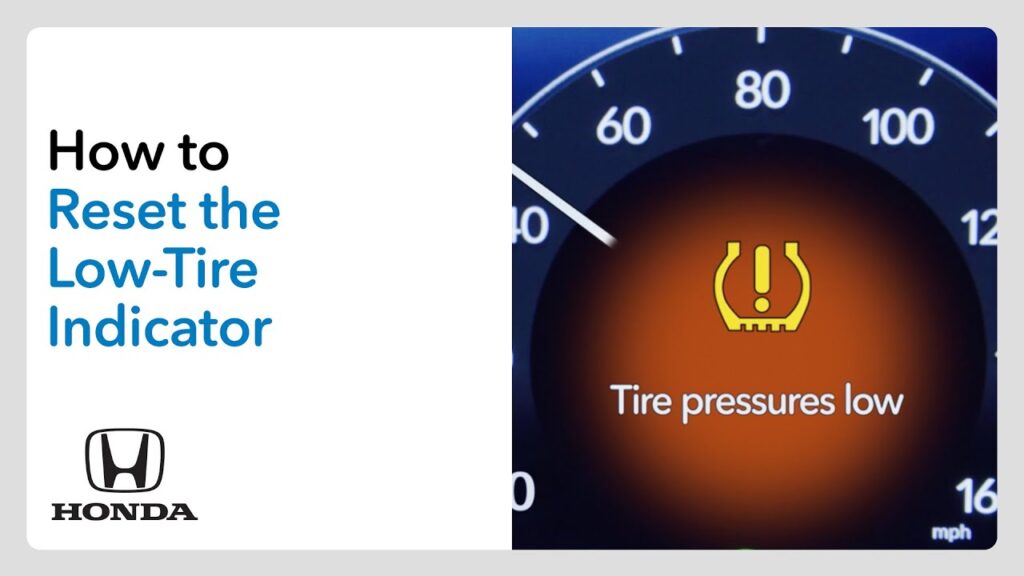
What Is Direct Vs. Indirect Tpms?
Here’s a breakdown of their key differences:
Direct TPMS
- Individual sensors: Each tire has a dedicated sensor mounted inside, directly measuring and transmitting pressure and temperature data to your vehicle’s ECU (Electronic Control Unit).
- More accurate: Provides real-time readings for each tire, allowing early detection of even small pressure changes.
- Faster alerts: Triggers the TPMS light immediately when a tire falls below the recommended pressure threshold.
- Requires sensor replacement: Sensors have batteries that typically last 5-7 years, needing replacement afterward.
- Relearn procedure: Manual relearn is usually needed after adjusting tire pressure or replacing sensors, often using an OBD-II scanner or specific TPMS tool.
Indirect TPMS
- No individual sensors: Utilizes existing ABS wheel speed sensors to indirectly monitor tire pressure based on rotational differences.
- Less accurate: Can be slow to detect small pressure changes and is susceptible to factors like uneven road surfaces or temperature variations.
- Slower alerts: May take several miles of driving with underinflated tires for the light to activate.
- No sensor replacement needed: No additional components to replace, making it generally less expensive.
- Automatic relearn: Often relearns automatically after driving a few miles with the correct tire pressure.
FAQs
Do tpms sensors need to be programmed?
Yes, TPMS (Tire Pressure Monitoring System) sensors typically need to be programmed or initialized when they are installed or replaced to ensure accurate monitoring of tire pressure.
Is it OK to drive with the TPMS light on?
No, it is not recommended to drive with the TPMS (Tire Pressure Monitoring System) light on. It indicates low tire pressure, which can affect vehicle handling and lead to safety risks.
What activates a TPMS sensor?
A Tire Pressure Monitoring System (TPMS) sensor activates when the vehicle is started or in motion. It measures tire pressure and alerts the driver to low-pressure conditions for safety.
Can you relearn TPMS without tool?
Relearning Tire Pressure Monitoring System (TPMS) without a tool is generally not recommended. A TPMS tool is designed to reset and calibrate sensors accurately. Using one ensures proper functionality and safety.
How does TPMS know which tire?
Tire Pressure Monitoring Systems (TPMS) use sensors placed on each tire or the vehicle’s wheel assembly to measure and transmit real-time tire pressure data, allowing the system to identify the specific tire affected.
Conclusion
If your honda tpms light on but tires are fine, it could indicate a malfunction in the TPMS system itself. It’s advisable to check the TPMS sensors and their batteries, as well as the system’s wiring.
If the issue persists, consulting with a professional mechanic or visiting a Honda service center for a thorough diagnostic and potential system reset may be necessary to address the TPMS light concern accurately.


